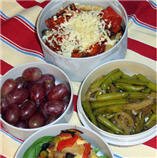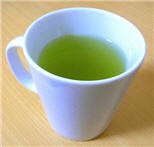 During this holiday season, you may should give following foods a high priority on your eating (or recipe) list:
During this holiday season, you may should give following foods a high priority on your eating (or recipe) list: Sunflower Seeds
These salty wonders have the highest natural vitamin E content of any food around. Everyone wants looking younger, and Vitamin E is one of the most important nutrients at fighting the aging effects of free radicals.
These salty wonders have the highest natural vitamin E content of any food around. Everyone wants looking younger, and Vitamin E is one of the most important nutrients at fighting the aging effects of free radicals.
Spinach and Beans
Researchers in Australia, Indonesia and Sweden studied the diets of 400 elderly men and women, and found that those who ate the most leafy green vegetables and beans had the fewest wrinkles. The reason? Spinach and beans are full of compounds that help prevent and repair wear and tear on your skin cells as you get older.
Grape Juice
We all know drinking wine are good for youyr heart; by the same mechanism, grape juice can protect you from heart attack, stroke, as well as keep your middle-aged skin from sagging. Grapes are filled with antioxidant polyphenols that help to keep your skin flexible and elastic.
Researchers in Australia, Indonesia and Sweden studied the diets of 400 elderly men and women, and found that those who ate the most leafy green vegetables and beans had the fewest wrinkles. The reason? Spinach and beans are full of compounds that help prevent and repair wear and tear on your skin cells as you get older.
Grape Juice
We all know drinking wine are good for youyr heart; by the same mechanism, grape juice can protect you from heart attack, stroke, as well as keep your middle-aged skin from sagging. Grapes are filled with antioxidant polyphenols that help to keep your skin flexible and elastic.
Sweet Potatoes
Overexposure to the sun is one of the primary reasons men age prematurely. But sweet potatoes may help to fight sun damage. European researchers recently found that pigments from beta-carotene-rich foods - like sweet potatoes and carrots - can build up in your skin, helping to prevent damage from ultraviolet rays.
Cheese
Overexposure to the sun is one of the primary reasons men age prematurely. But sweet potatoes may help to fight sun damage. European researchers recently found that pigments from beta-carotene-rich foods - like sweet potatoes and carrots - can build up in your skin, helping to prevent damage from ultraviolet rays.
Cheese
Cheese is prbably one of the best foods you can eat for your teeth. It's a good source of calcium to keep your teeth strong. Plus, eating cheese can lower the levels of bacteria in your mouth and keep your teeth clean and cavity-free.

















